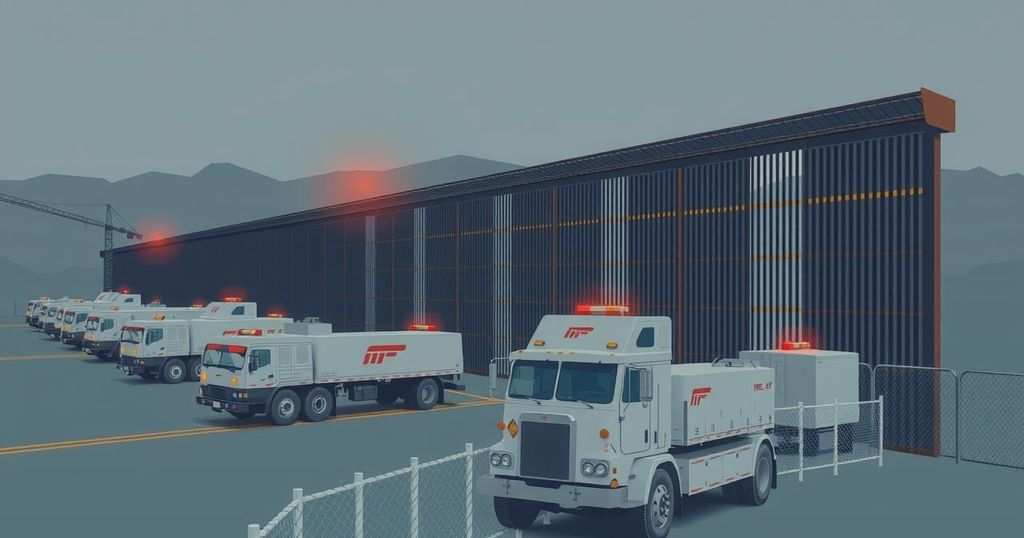Four Ways Trump’s Big Bill Could Change the U.S. Immigration System

President Trump’s immigration bill proposes $150 billion for border security, detention centers, and increased law enforcement personnel. Key components include a border wall funding, enhanced immigration courts, and substantial increases in immigration fees. As the Senate debates the bill, its implications for the U.S. immigration system are significant but remain largely undefined.
President Donald Trump’s proposed immigration reform package could shift the landscape of U.S. immigration policy significantly, with roughly $150 billion earmarked for various initiatives over the next four years. This funding aims to intensify enforcement measures, including border wall extension, detention facilities, and the recruitment of additional law enforcement personnel. Notably, Immigration and Customs Enforcement (ICE) plans to ramp up its operations significantly as the Senate works on its version of the bill, closely mirroring the House’s framework.
The proposed legislation aims to set aside $46.5 billion for what is referred to as an “integrated border barrier system.” This encompasses everything from fencing to technology aimed at monitoring crossings. The bill outlines plans for completing 701 miles of primary walls and 900 miles of river barriers along the U.S.-Mexico border. Chairman of the House Homeland Security Committee, Representative Mark Green, emphasized that lawmakers must prioritize these funding proposals to secure the nation’s borders.
While proponents hail the wall as crucial, the broader impacts remain open to interpretation. Border crossings have dipped under Trump’s presidency, but experts argue the long-term effectiveness of such barriers is uncertain. Criminal organizations have historically shown resourcefulness in defeating border security, employing methods like tunnels and tools to bypass walls.
The proposal includes another $45 billion dedicated to expanding immigrant detention facilities for adult migrants and families. It emphasizes broad authority for the Secretary of Homeland Security to set facility standards. Moreover, it calls for funding to add 18,000 new ICE and Border Patrol staff. ICE aims to increase its detention capacity drastically, signaling an aggressive deportation strategy reminiscent of commercial efficiency models. This push has also been favorable for the private prison sector, with stock prices soaring since Trump took office.
Shifting focus to the judicial side, the bill allocates $1.25 billion for enhancing the immigration court system by hiring more judges and increasing courtroom capacity. Currently strained, the system has a backlog of over 3.6 million cases, and hearings can take years. As arrests during hearings have surged, they have compounded the existing chaos, heightening anxiety among potential asylum-seekers. Greg Chen from the American Immigration Lawyers Association argued that while increased funding is needed, the rise in courthouse arrests highlights a worrying trend in immigration enforcement.
Finally, the bill proposes sweeping changes to immigration fees. Asylum applications, previously free, would now cost $1,000, with other associated fees climbing substantially. This could spell significant hurdles for many potential immigrants, forcing them to rethink their plans. Wealthier individuals might navigate these increases with relative ease, but for others, even a few hundred dollars can prompt a reevaluation of their immigration prospects.
From expanding the physical border to altering judicial processes, the profound ramifications of Trump’s proposed immigration bill are likely to resonate through many facets of the system, leaving numerous questions about its implementation and long-term effects. Amidst a polarized political climate, the future of this legislation remains uncertain as debates in Congress continue.
In summary, President Trump’s proposed immigration bill seeks substantial funding to enhance border security and streamline deportation measures, with notable increases in detention facilities, law enforcement personnel, and immigration fees. As the Senate considers its own version, the impacts of the bill remain multifaceted and complex. It could reshape not just enforcement practices but also the overall approach to immigration, with significant implications for many individuals and communities across the nation.
Original Source: www.pbs.org






